One of the challenges of senior executive interviews is the lack of structure.
When we are competing for roles earlier in our careers it is different. The interviewer gives us a problem or a case study to attack, or quite typically asks us to walk through our experience to date. Either way, there is a well-trodden path to follow, and we are given the opportunities to make our relevant points.
At a more senior level however, it may seem a little crass for an interviewer to be asking to go through a cv, and instead the “interview” is much more of a conversation, which brings with it the risk that key material gets left out.
There is much to be said about managing these situations well, but the purpose of this article is to propose just one key idea that will raise your concentration and awareness. I call this idea “Deliver Units of Value”.
Given the position in question and the attributes and experience that you bring, you will know that there are certain pieces of information that really strengthen your position. There are always a good number of these and they can range from huge career achievements to small character traits.
I call these nuggets of information, units of value. And what you’re looking to do in C-suite interviews is to deliver at least one unit of value in every answer that you give. Effectively you are looking to seize opportunities to drop-in units of value throughout the conversation.
Here are three ideas to help you to get good at doing this.
The first technique I call listening with intent.
Even if you are doing a little more talking than listening, you need to listen very carefully to the questions, and be acutely aware of the conversation flow, so that you can anticipate and identify opportunities to drop into units of value. As you practice this you will feel yourself gaining a certain conversation consciousness, and you will see that, as the interviewer is asking you questions, you will already be thinking about what units of value you’re going to put into the answer. The key word in listening with intent, is actually intent. You are deliberately seeking to deliver strategic messages into what it a relatively unstructured conversation. Do this well and no answer is bland or wasted, every single answer contributes to their image of you as the right person for the job.
The second technique is called bridging. Bridging is when, as you answer a question you extend that answer, to make a natural linkage to something else.
It’s a technique often used by politicians where they manage to be asked one thing and answer something completely different. I am not suggesting you adopt bridging to this extent, but it can be a very useful means of adding units of value.
So, when you are asked about one topic, you bridge, and you’re able to drop-in additional units of value in the same answer. And just as for listening with intent, then as a question is being asked, you can be planning if you are going to bridge and where you’re going to take the answer.
The third technique is quite simply to be specific.
The more specific you are with an answer, then the stronger the value content.
Here is a simple but useful example that comes from two interviews I did when I was seeking a new CFO. I asked both candidates a rather casual question about what they would do immediately upon starting the new role.
One of them said, “Well in the early days, I’ll have to meet the staff and get to know them.” While the second candidate said, “Over the first three weeks, I will audit the quality of the team.”
To a large extent, they were saying the same thing, but they said it very differently. The second answer is more specific and has more value in it. You can even hear how the time parameter of 3 weeks adds to the feeling that this is a person of action.
Another example I recall, was where a potential new head of sales said, “I’m quite used to managing a large number of salespeople”, when another said, “I have managed international sales teams of some hundreds of staff in disparate geographies, and different time-zones, and I know what it means to be chasing and checking purchase orders at the end of a quarter.” Again, the second answer is more specific, and it contains more value.
It is easy to be a bit vague and it takes concentration and discipline to be more specific, but it is worth taking time and effort to master this technique. A focus on being specific is a potent skill and it will make a marked change in the effectiveness of your communication, not only in interviews but also in plenty of other settings too.
Delivering units of value can sound obvious, but as with so many skills in so many arenas, a heightened awareness of a concept like this can make all the difference to your performance. There are always more losers than winners in the selection process for desirable executive roles and the margin between winning and losing can be very thin. So think about, and focus on, these three techniques, listening with intent, bridging and being specific and get yourself on the right side of the winning margin.


